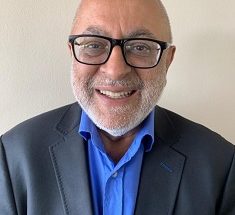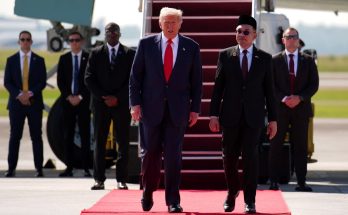
DUBAI:
Rejoice, recession seems to be over in Dubai, a mecca for businessmen, shopaholics and pleasure-seekers. Whoever visited Dubai in 2008-09 knows what it was like in those days. Empty roads, the near-deserted malls, a steep fall in hotel rates and the shocking real estate crash – the signs of recession were all-too-real and ominous. But the emirate has bounced back. The turnaround is striking — it’s bumper to bumper on the roads once again, people are shopping like crazy at malls and construction is in full swing in every possible nook and corner.
In fact, Dubai now seems hell-bent upon proving it to the world that it once again stands for richness, leisure, luxury and unimaginable wealth. No wonder then that the Dubai police have also added a $550,000 Lamborghini to its fleet. Local media reports that the sports car, painted in green and white, will be mostly dispatched to tourist areas to show “how classy Dubai is”. The government has turned market-savvy and is bristling with ambitious plans for the city, including the world’s largest Ferris wheel and a satellite city named after its ruler.
A shopping frenzy is on. The malls are gorged with visitors of every age-group, nationality, gender and income groups laden with shopping bags. Designer brands such as Gucci or Chanel, whose one odd showroom at Delhi’s Emporio mall is a matter of pride for every Indian, are ubiquitous, raising the bar for hedonistic spending. While the recently- opened Dubai Mall has already established itself as the world’s one-stop-shop for luxury shopping, the city now has a mall at virtually every two kilometres, and many more are coming up.
The travel and leisure industry has upped their ambitions; caution is out, brash ambition is in. Hotel chains, resorts, and luxury spas have announced audacious expansion plans for Dubai. In 2012, the number of hotels climbed to 599 from 575, with a clutch of new kids on the block like Fairmont, The Palm, JW Marriott Marquis and Jumeirah Creekside. In fact, it’s this shopping-cum-sight-seeing extravaganza that’s crystallizing Dubai’s reputation as a preferred tourist destination. No wonder then that it broke its own record last year by registering a record number of 10 million tourists.
Even though Dubai was always known for boundless wealth and bling, there seems to be a design behind its ruthless display lately – to drive home the point that recession is a thing of the past. At various points in the city, you see new residential and commercial projects coming up. The newly-built Jumeirah Beach Residency and the adjoining Dubai Marina area is a picture of opulence and designer lifestyle. The area mostly has European expats living there, who are in Dubai on transit or have made the city their home.
The real estate crash of 2008 has now given way to a realty boom of sorts. An official of the French Embassy, who doesn’t wish to be named, says, “When I was posted here in 2008 and rented an accommodation in the Marina area, I would call the landlord and dictate the rent. Even if I told him to cut it down every month by a few hundred dirhams, he would relent. But now, the rent goes through the roof, and needless to say, the landlord – who is an Arab – is calling the shots,” he says. Another 40,000 new homes will enter Dubai’s property market over the next two years as developers revive projects that suffered after the collapse of the emirate’s real estate market, say consultants Jones Lang LaSalle in a report on Dubai’s real estate market for the first quarter of 2013.
Even the volume of trade seems to have increased manifold, which even a lay person can judge considering the number of cargo ships moving about in the Arabian Sea, ferrying in and out containers loaded with electronics, textiles, merchandise, and even vegetables and edible products for that matter.
India bets on Dubai’s revival
The resurrection of Dubai from the debris of the 2008-9 meltdown is a cause of cheer for India. The UAE is home to 1.75 million Indians – the largest expatriate community in the UAE. UAE companies have invested over $2.2 billion, making the Gulf country the tenth biggest investor in India in terms of FDI. Bilateral trade is on an upswing: the India-UAE trade has surged to around $ 72 billion during 2011-2012. India is the largest trading partner of the UAE.
Besides, Dubai has always been a hot favourite with Indian middle class tourists, looking for a quick trip abroad on an affordable budget. The UAE has also aggressively targeted Indian tourists with its airlines offering cheaper fares and enticing them with deals in budget hotels. There are 484 direct flights per week between various destinations of India and the UAE. Over 700,000 Indian tourists and businessmen stayed in Dubai’s hotels in 2011, making Indians the second largest group travelling to Dubai only after Saudi Arabia.
India has taken note of Dubai’s second coming, as it were. In March this year, India’s Prime Minister Manmohan Singh was expected to visit Dubai for bilateral talks, on his way to Durban to attend the 5th BRICS summit of emerging powers. The visit would have been the first by an Indian prime minister in more than three decades, after Indira Gandhi visited there in 1981. Even though the prime ministerial visit could not take place due to scheduling issues, India is watching the UAE’s dramatic revival with keen interest. The emirate’s GDP is expected to rise over 4 per cent this year, reviving expectations in India that some of the bounce back in the emirates’ fortunes will also bring in much-needed investments to Asia’s third largest economy.
Author Profile
Latest entries
 CultureApril 1, 2014Border-crossing: Supper in Sweden, Dinner in Denmark
CultureApril 1, 2014Border-crossing: Supper in Sweden, Dinner in Denmark Books / PoetryOctober 3, 2013Unmasking honour killings in India
Books / PoetryOctober 3, 2013Unmasking honour killings in India CultureSeptember 20, 2013The Little Mermaid: 100 years of fairytale splendour
CultureSeptember 20, 2013The Little Mermaid: 100 years of fairytale splendour India and the WorldJuly 27, 2013Dubai Unbound: Tourism, economy bounce back; India bets on growth story
India and the WorldJuly 27, 2013Dubai Unbound: Tourism, economy bounce back; India bets on growth story







